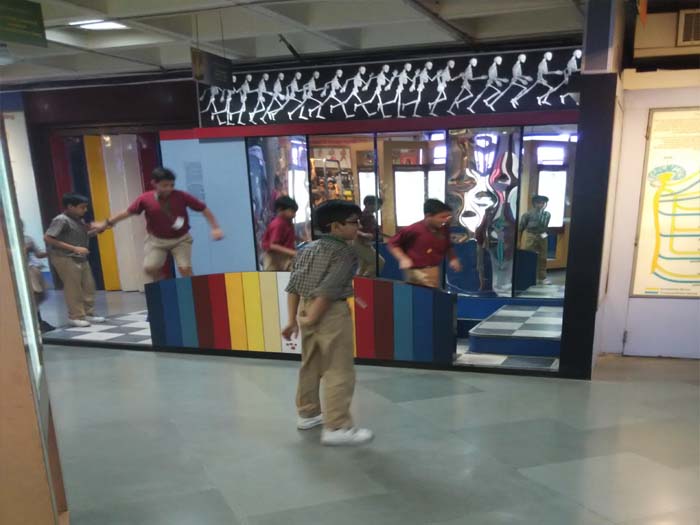Visit to the National Science Centre, class 5
A group of 146 students of class V along with 5 teachers went on an excursion to the National Science Centre on Monday, 25 July 2016 in an attempt to arouse new scientific interest amongst students.
The museum houses a unique collection of scientific models and is filled with a plethora of scientific information stored in one place.
The centre, operating under the National Council of Science, is an autonomous body overseen by the Ministry of Culture, Government of India.
Students viewed a number of models based on the myriad principles of science. They visited the numerous galleries such as Emerging Technologies, Water: The Elixir of Life, Information Revolution, Digital Information, Fun Science, Heritage Gallery, Prehistoric Life Gallery, Human Biology Gallery and The Uniqueness of Human Life Gallery. They viewed models of the Equaliser, Xylophone, Electronic Organ and Organ Pipes which involved games and psychomotor skills to enhance learning.
[gallery link="file"]
Students were fascinated by the Fun Science Gallery as it was full of hands'-on exhibits explaining the basic fundamentals of science. They were introduced to the evolution of Communication Technology, the Digital Information Revolution in India, Indias contribution to Science and Mathematics, Nobel Prize winners etc.
HALL OF NUCLEAR POWER
The Centre in collaboration with the Nuclear Power Corporation of India (NPCIL) has designed and developed a new gallery for nuclear power. The new gallery has hands'- on exhibits on various aspects of nuclear energy. There were also exhibits on atomic structure, the process of nuclear reactions etc. which are a part of our middle and senior school curricula.
OUR SCIENCE & TECHNOLOGY HERITAGE GALLERY
Indian heritage in science and technology has a long history of about 4500 years. The Science and Technology Heritage Exhibition at the centre depicted how, over the course of time, our civilisation has a strong scientific and technological culture.
Finally, it was time to return, but not without a bank of scientific knowledge collected by the children.
Ms. Purnima Dwivedi.













